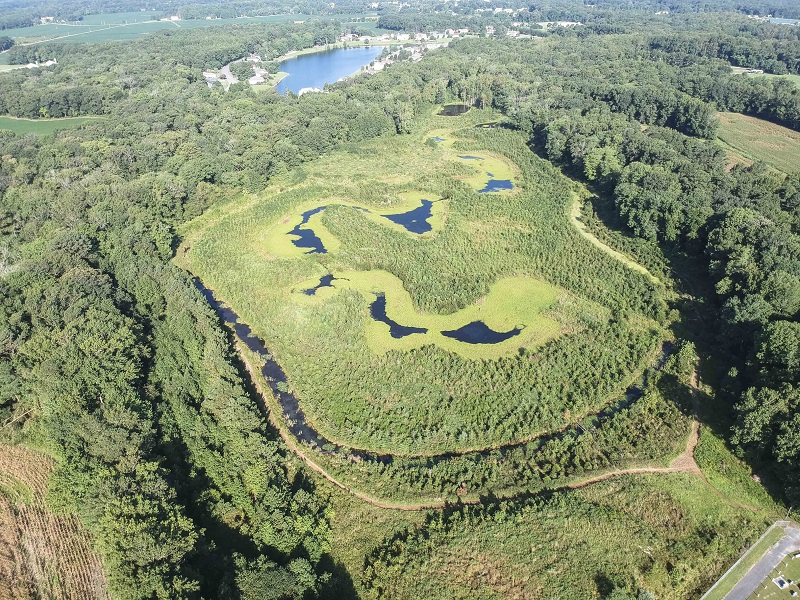Wetlands & Waterways

Lizard Hill wetland creation site in Worcester County
The Maryland Department of Transportation State Highway Administration (MDOT SHA) has exceeded its goal of restoring 200 wetland acres and 5 miles of stream by the end of 2011. Many wetland mitigation and stream restoration projects continue in our State.
The Chesapeake Bay Watershed in Maryland includes hundreds of miles of wetlands, streams, and valuable ecosystems. Watersheds are areas of land where all streams, creeks, and rivers drain to the same place. Wetlands are water resources within watersheds. They include swamps, marshes, bogs, and similar areas. Wetlands are among the most diverse ecosystems on the planet with representatives from plant and wildlife families such as cattails, sedges, fish, birds, turtles, salamanders, and frogs.
The MDOT SHA Mitigation Team protects and restores streams and wetlands in the Chesapeake Bay Watershed and our State. We’ve established three key actions for our roadway projects:
- Identifying ways to avoid impacts to wetlands and streams.
- Reducing effects.
- Replacing resources when effects cannot be avoided or reduced.
Replacing resource functions of wetlands and streams is known as 'Compensatory Mitigation.'
Here is an example of compensatory mitigation: A wetland located along a highway may be affected by one of our roadway widening projects. Depending on the proposed improvements and the location of existing resources, it may not be possible to avoid an environmental impact. In this case, MDOT SHA enhances or restores nearby wetlands to compensate. MDOT SHA staff also consider creating a new wetland site at a nearby location or within the same watershed where natural resources and water quality can be improved.
Mitigation, along with wetland/stream enhancements and restoration, is a collaborative effort that engages local communities, environmental regulatory agencies, and environmental interest groups. Residents and local natural resource groups often provide valuable information on viable sites that could benefit from a new wetland or a stream restoration.